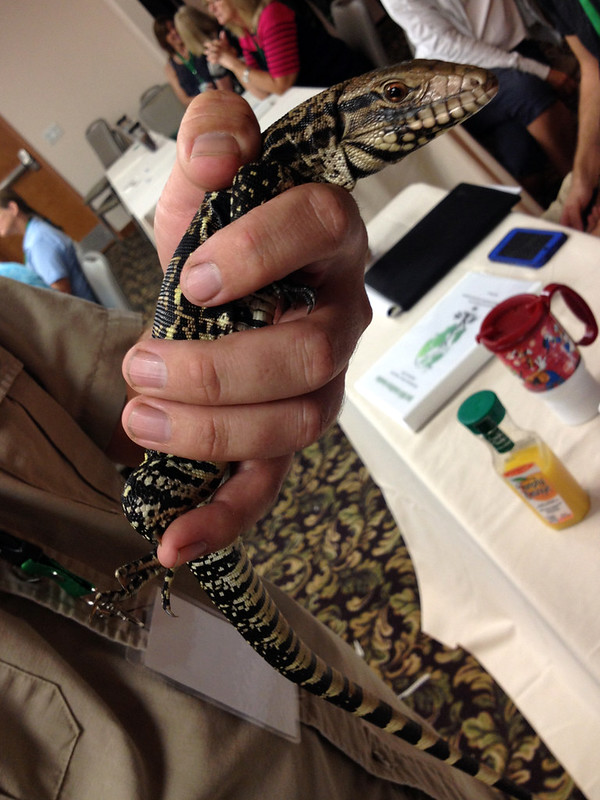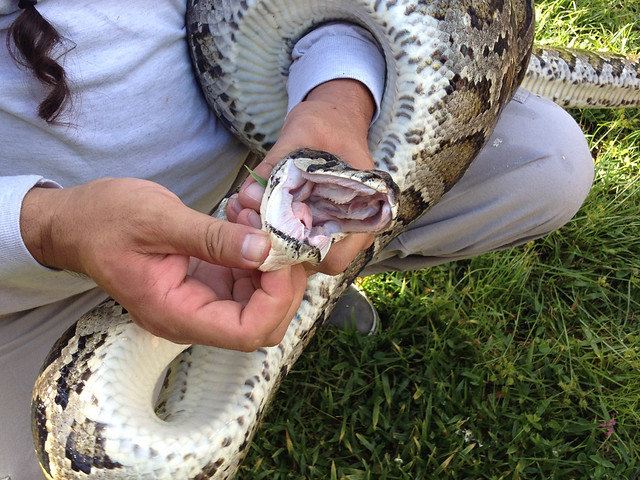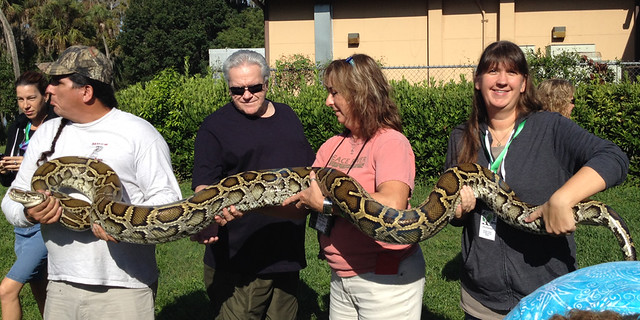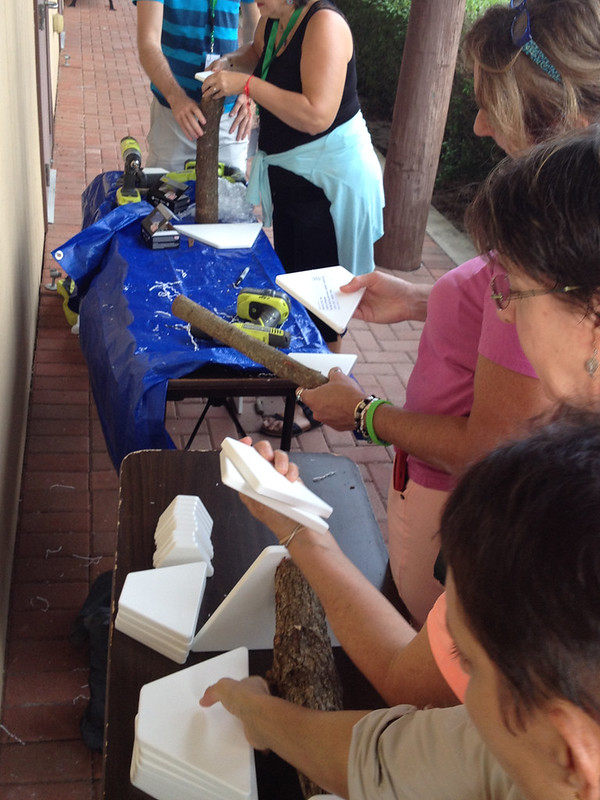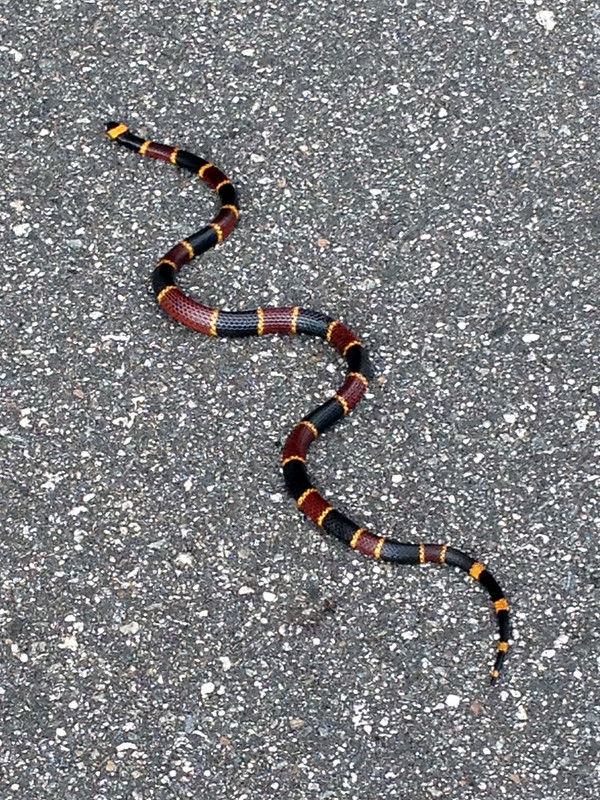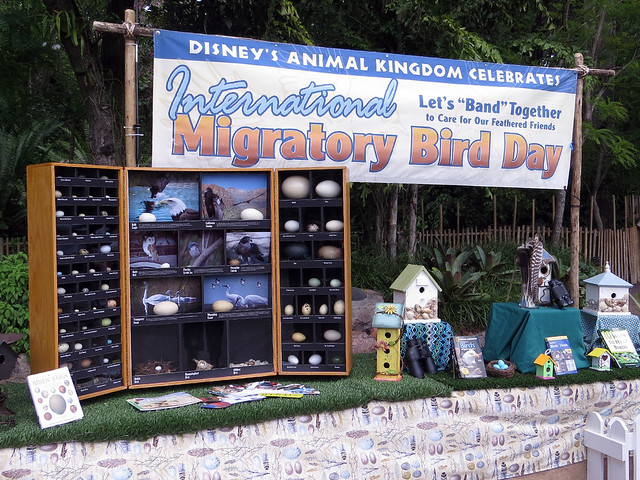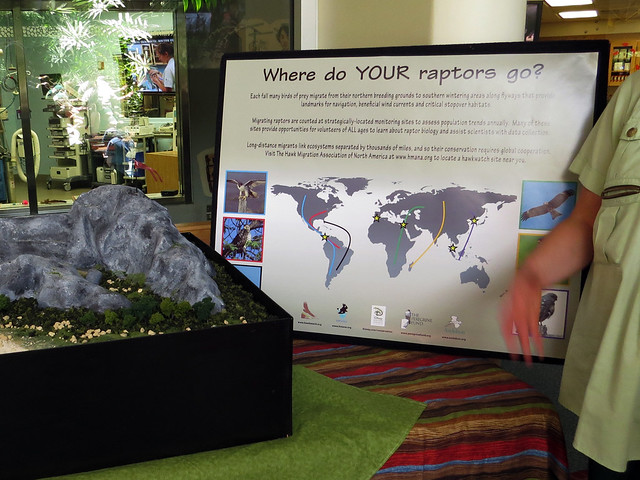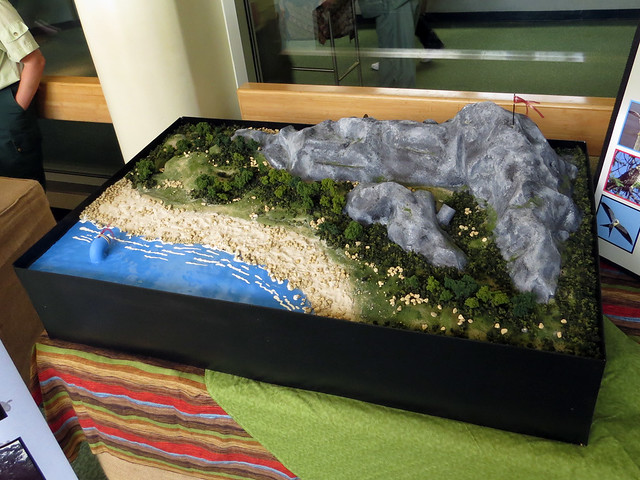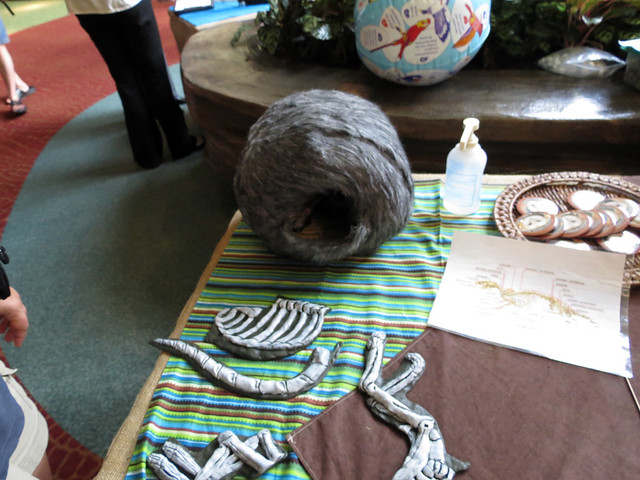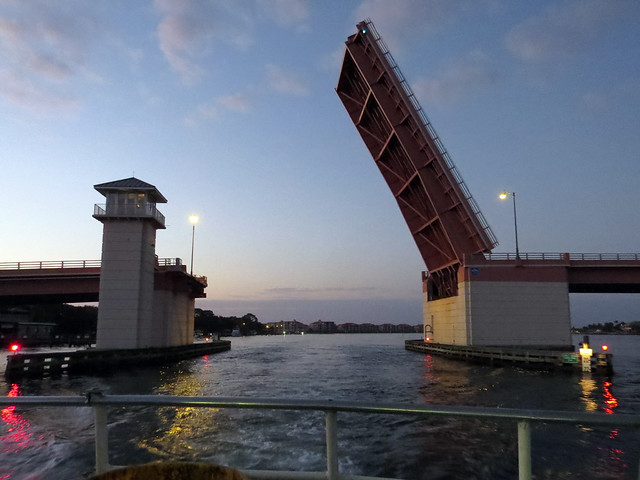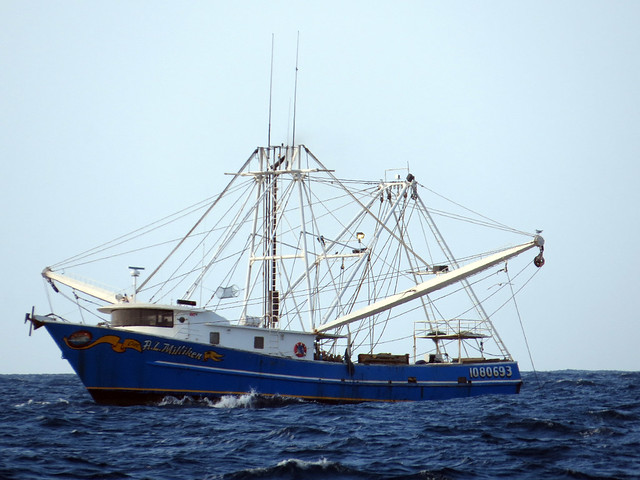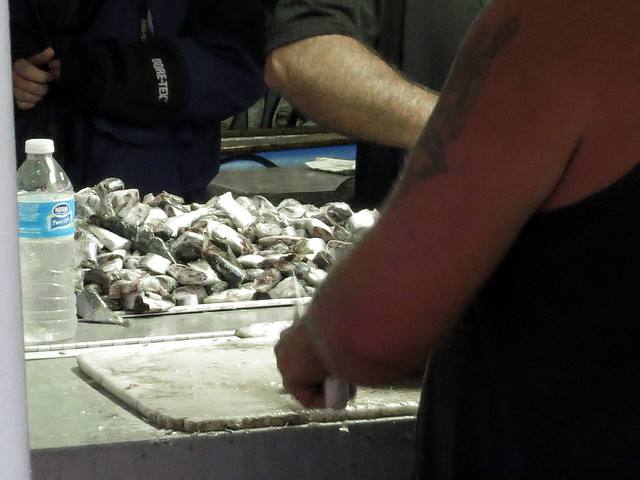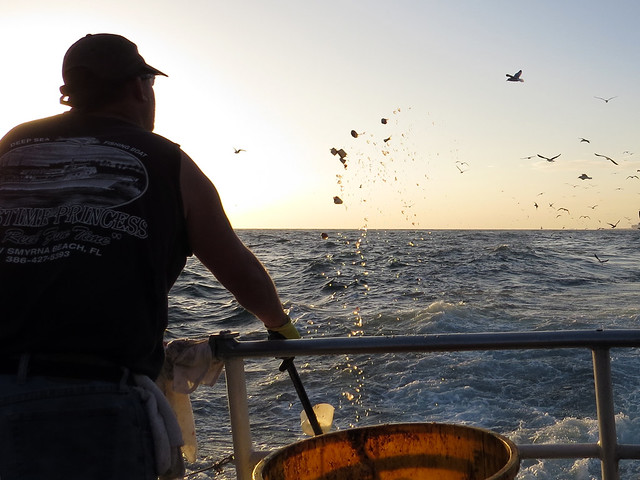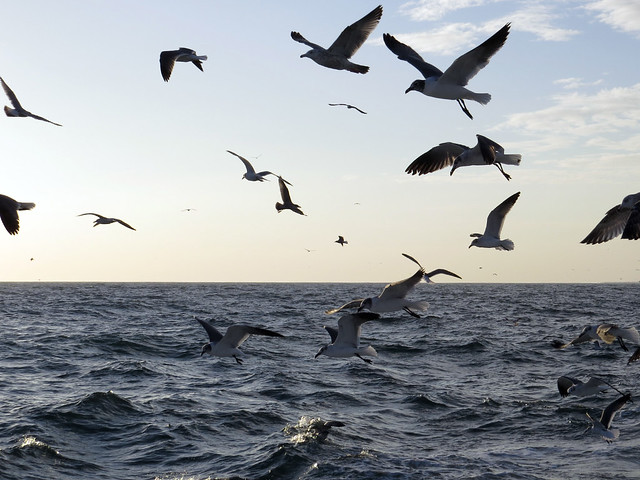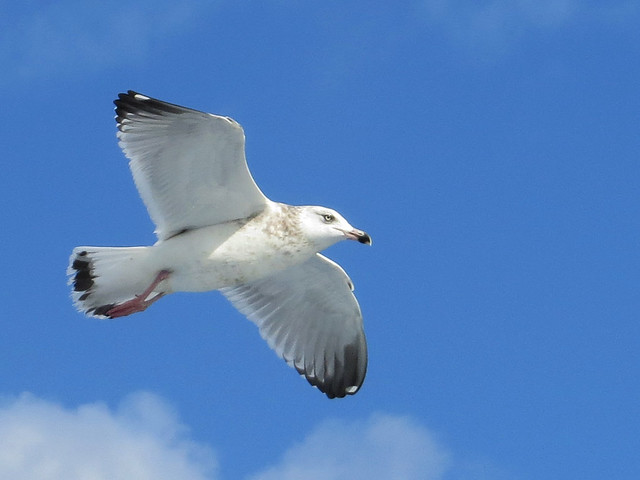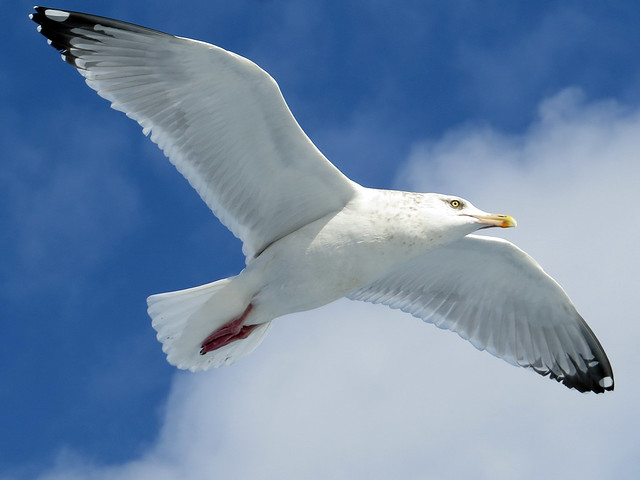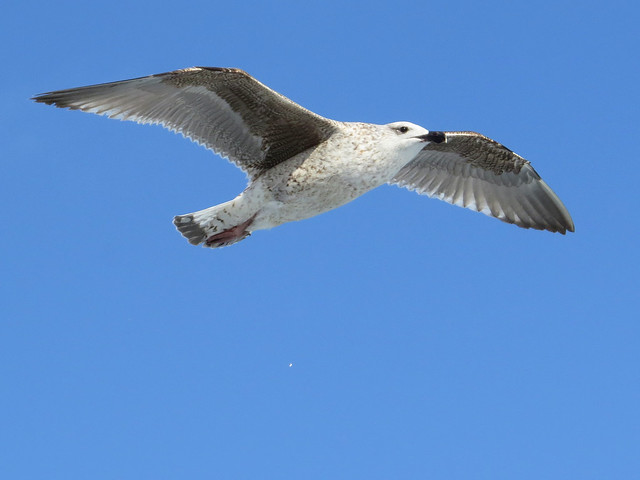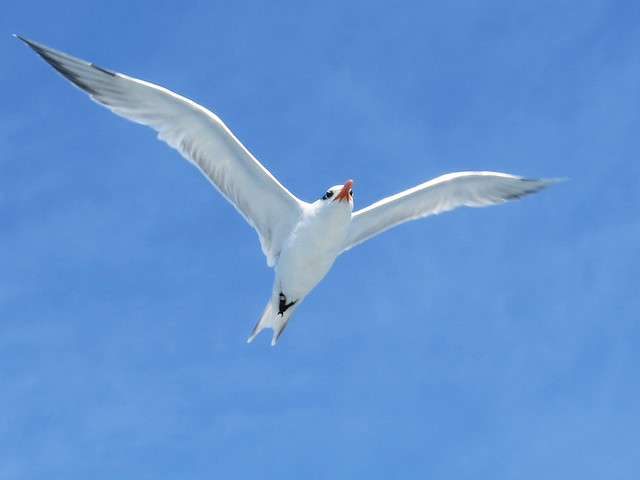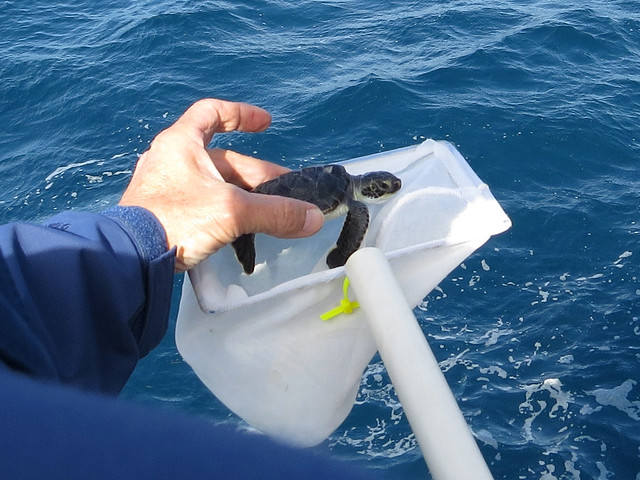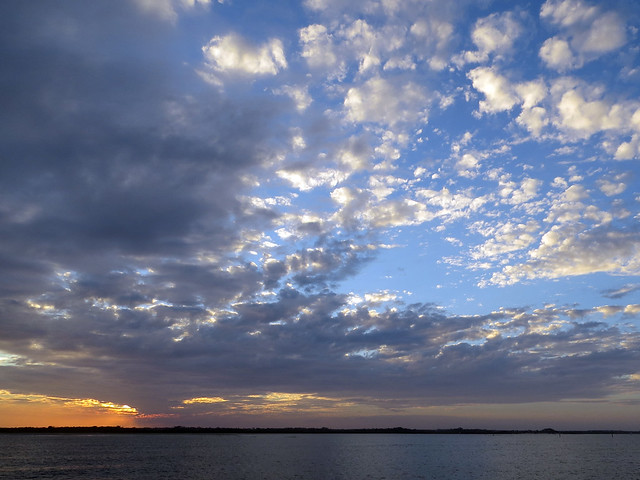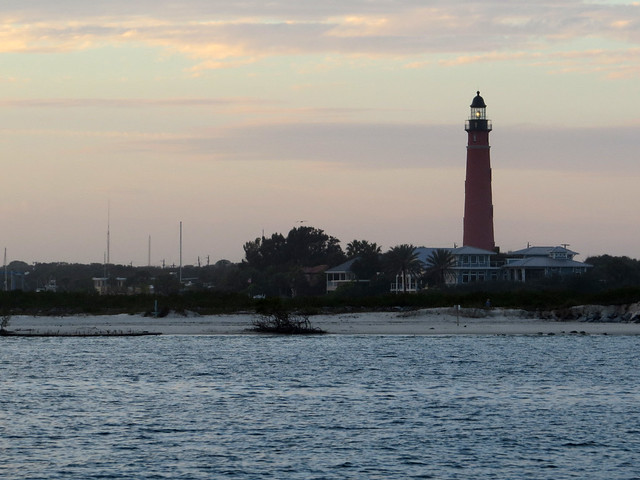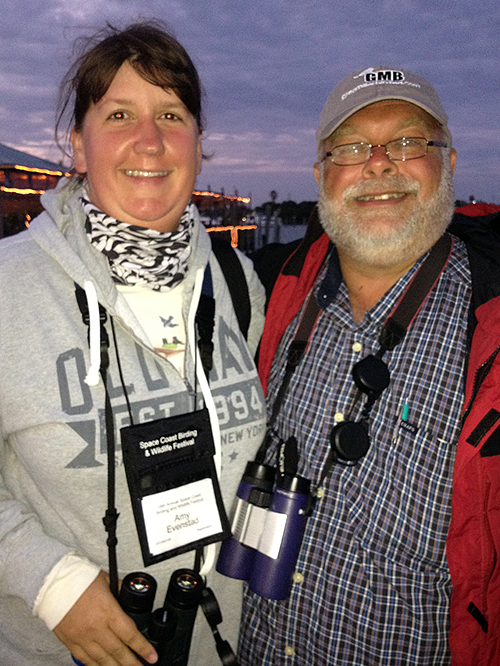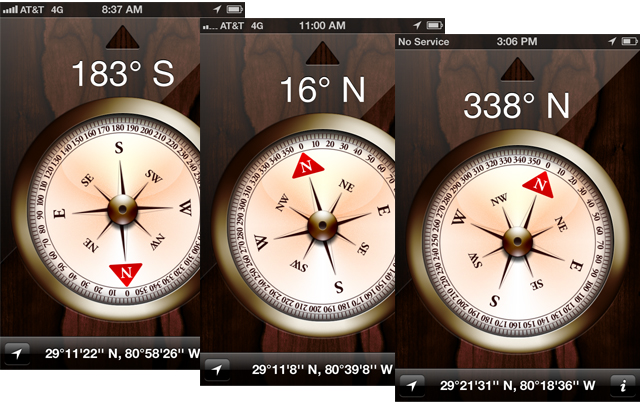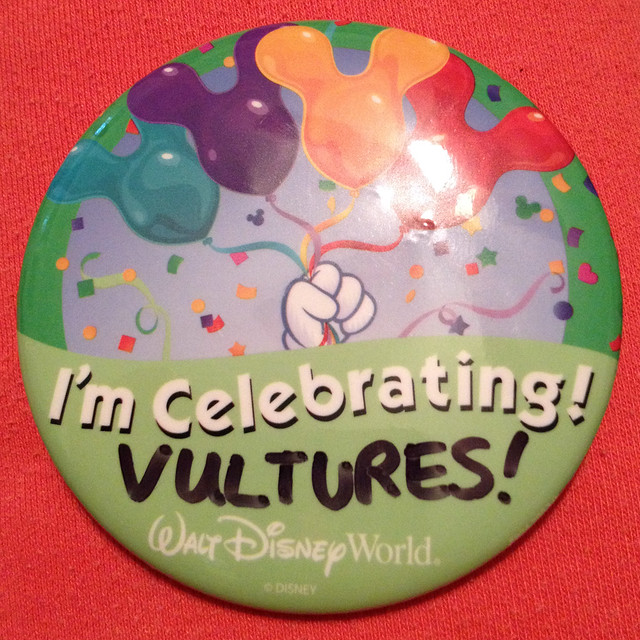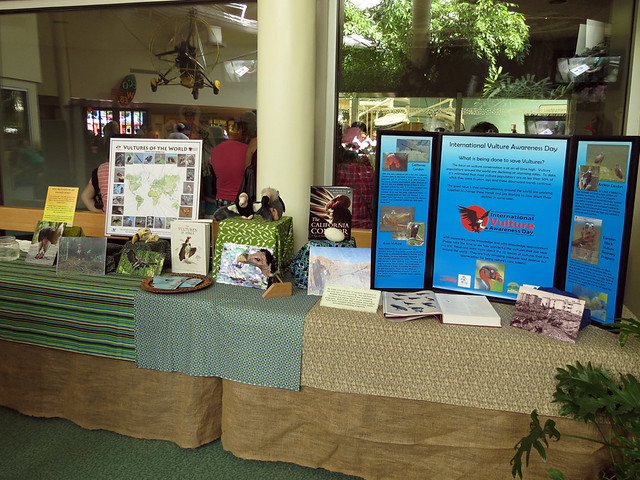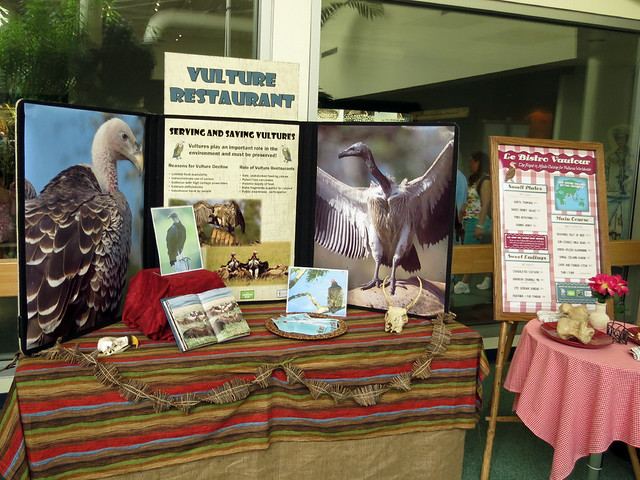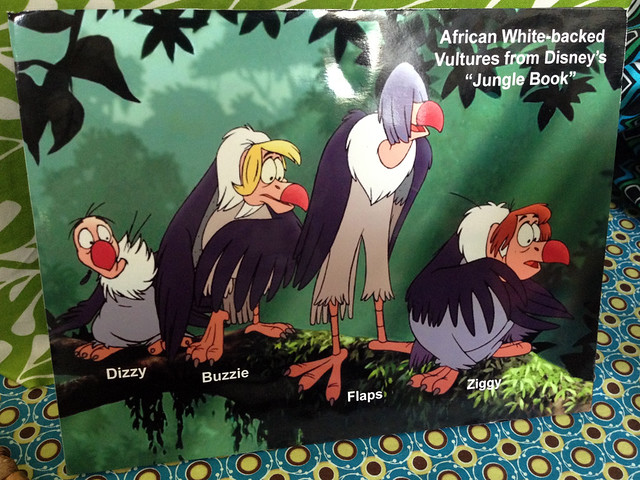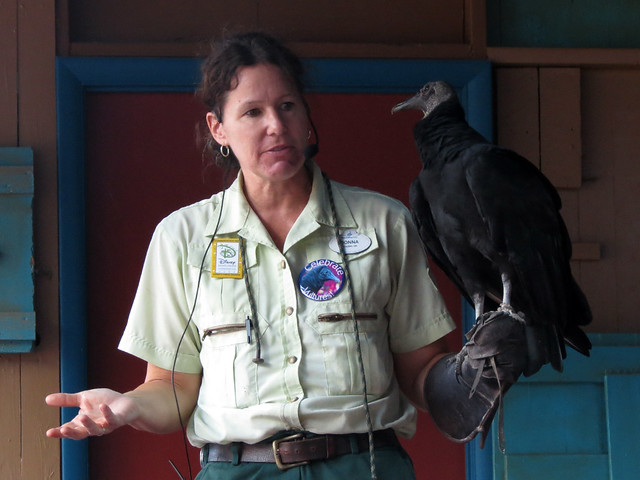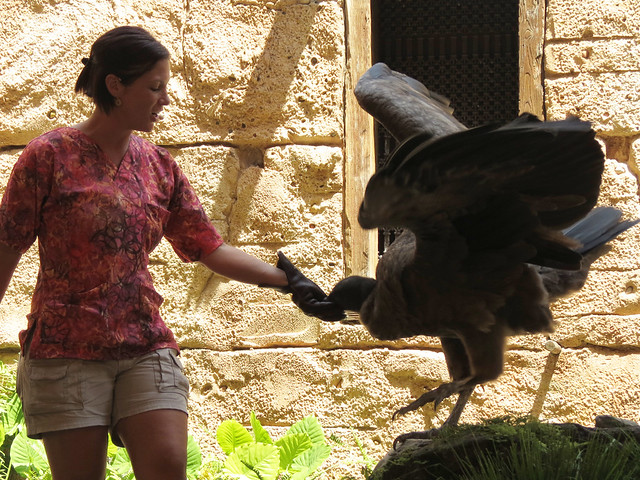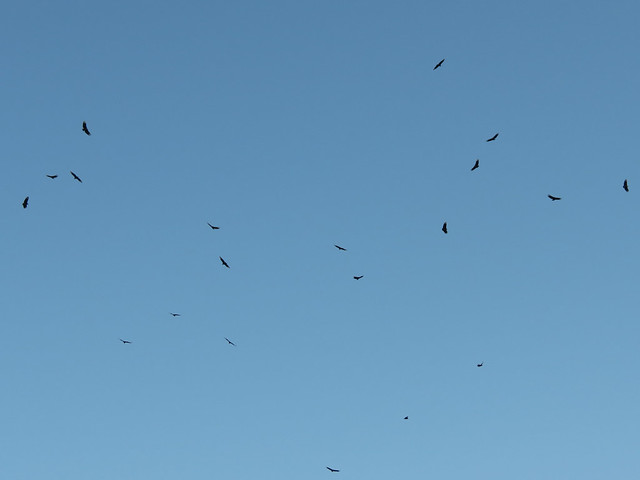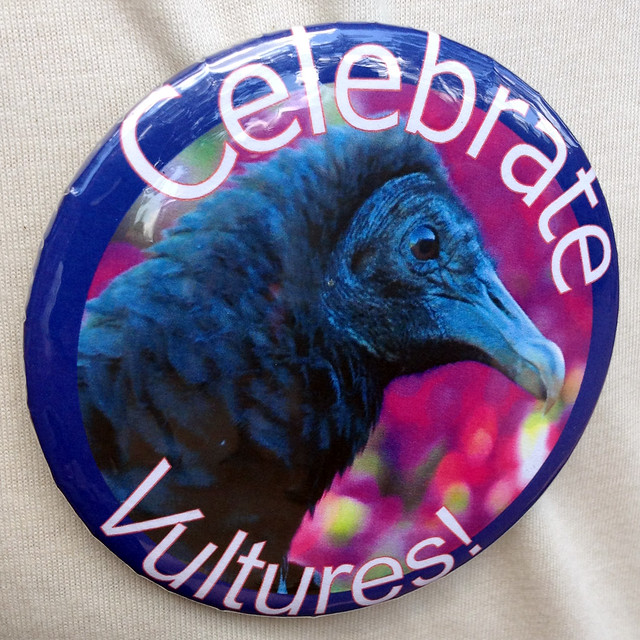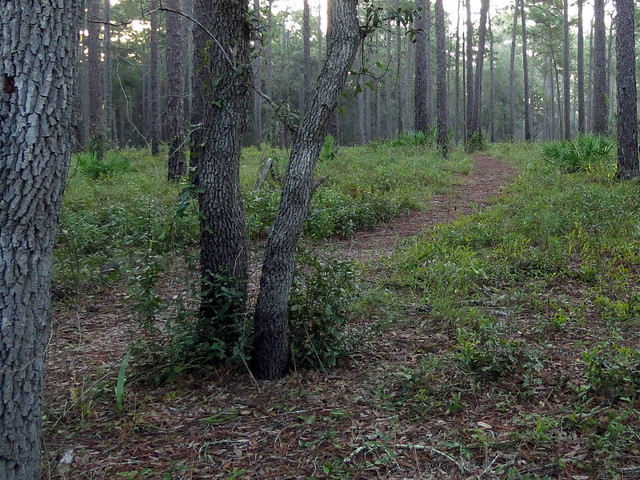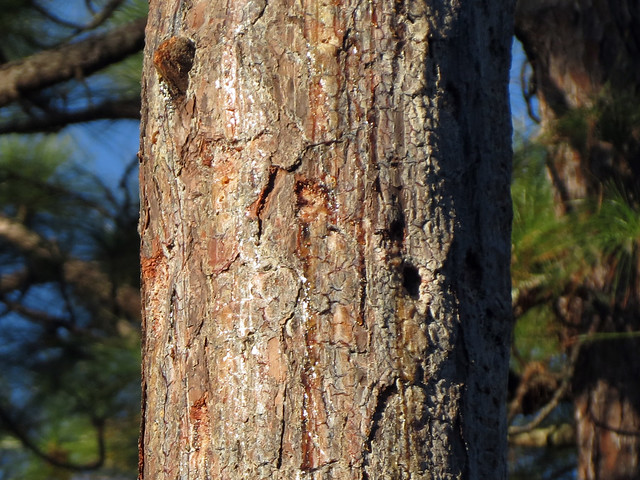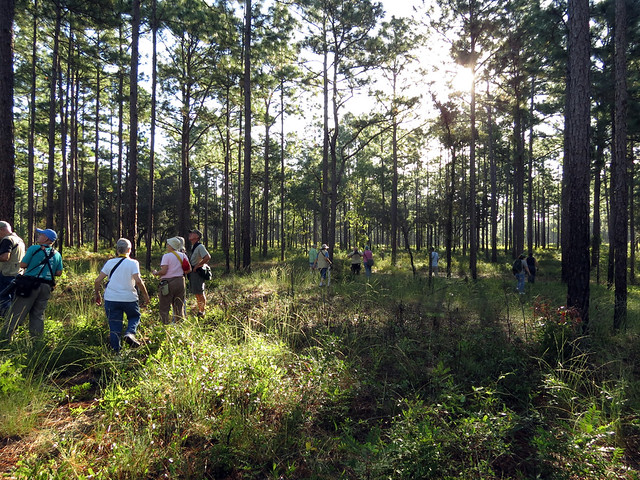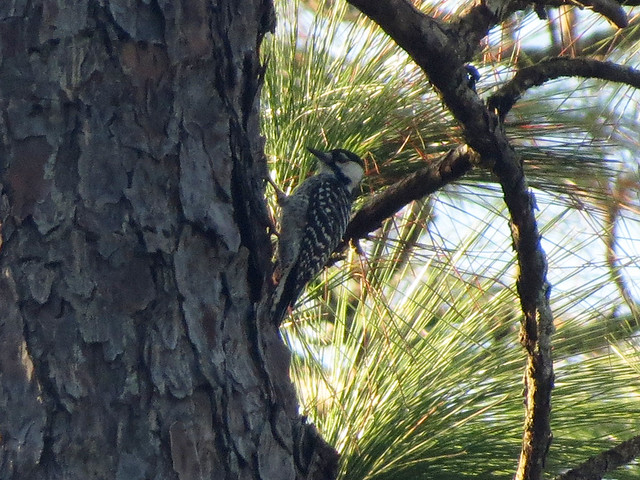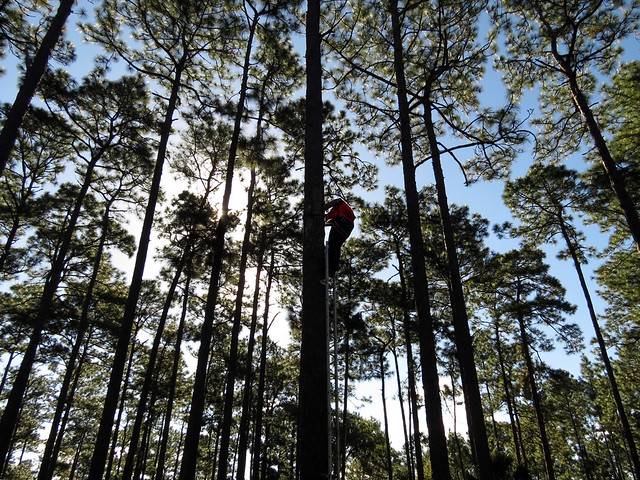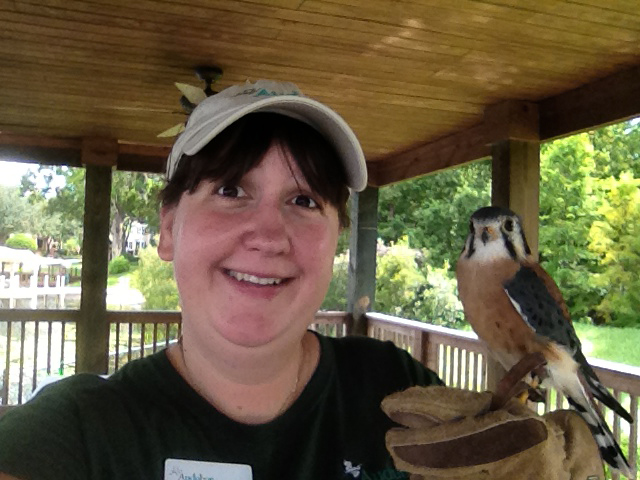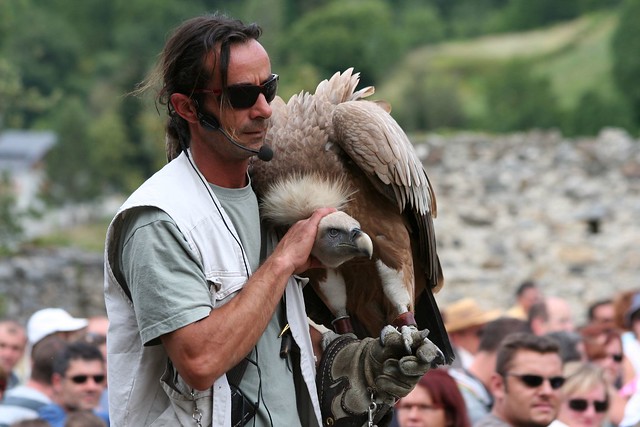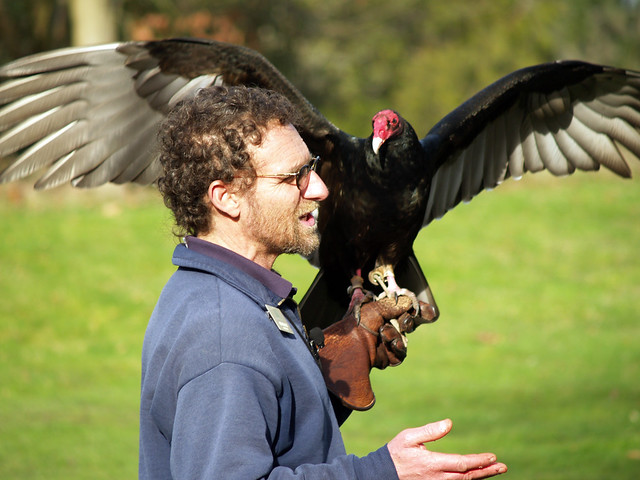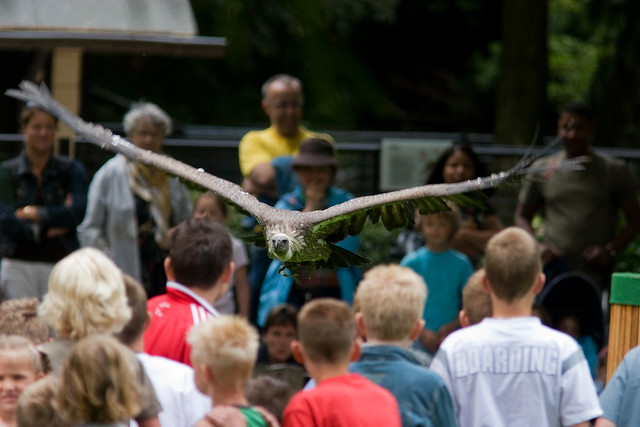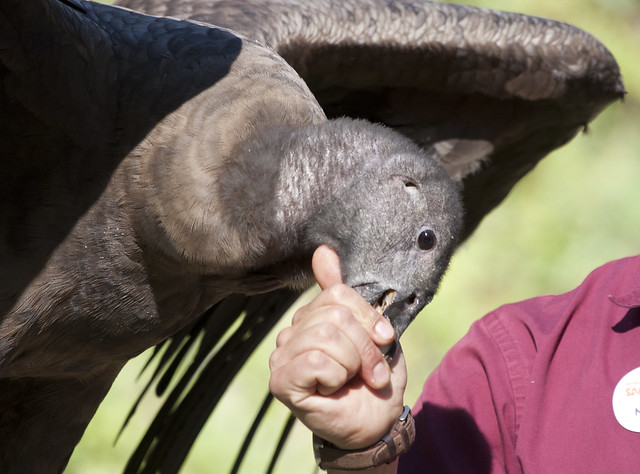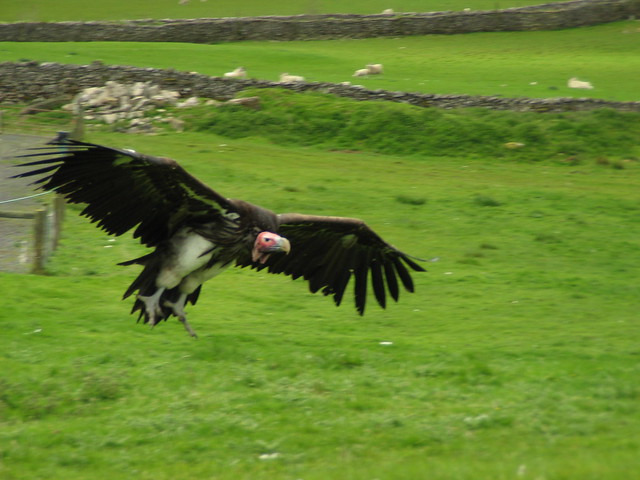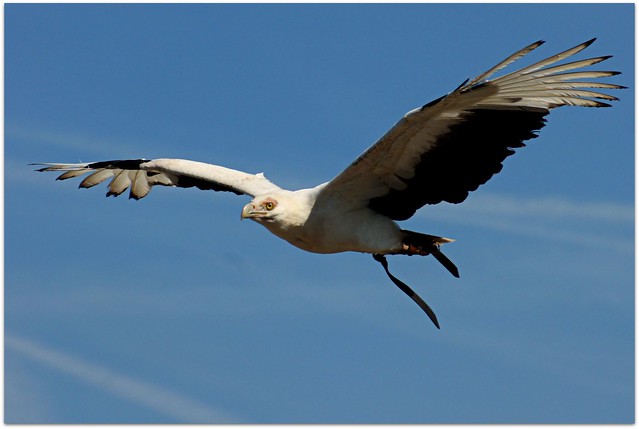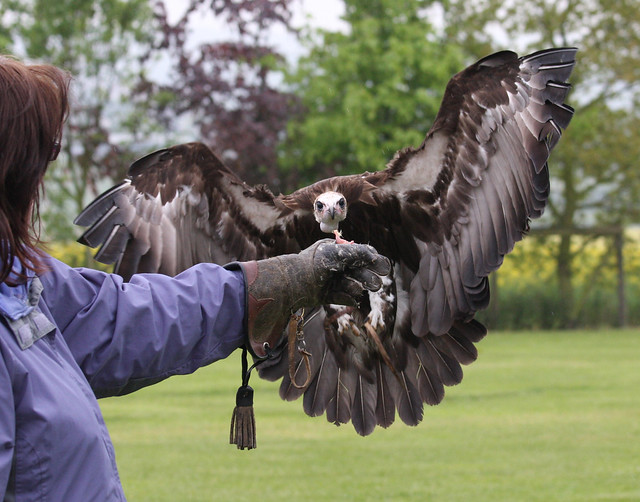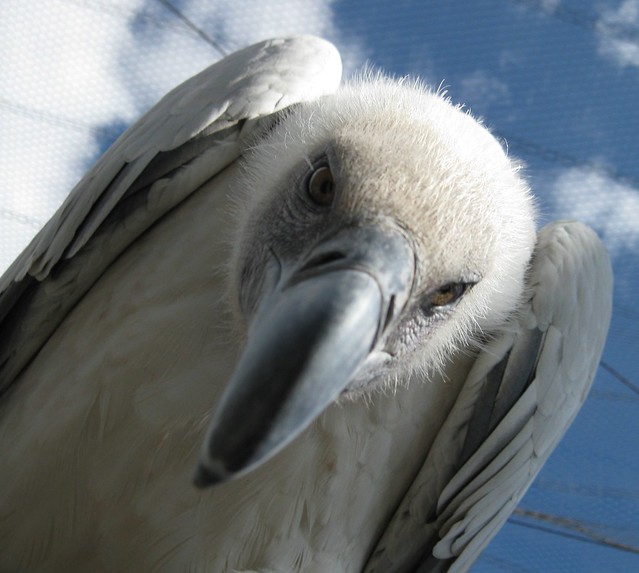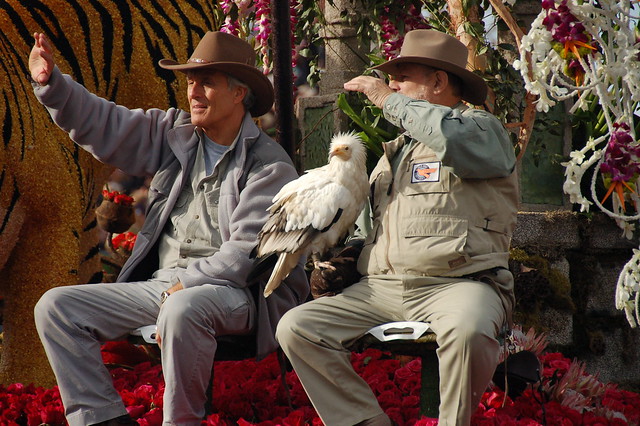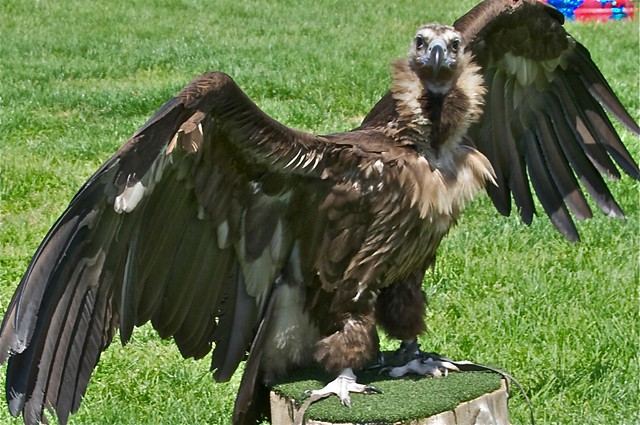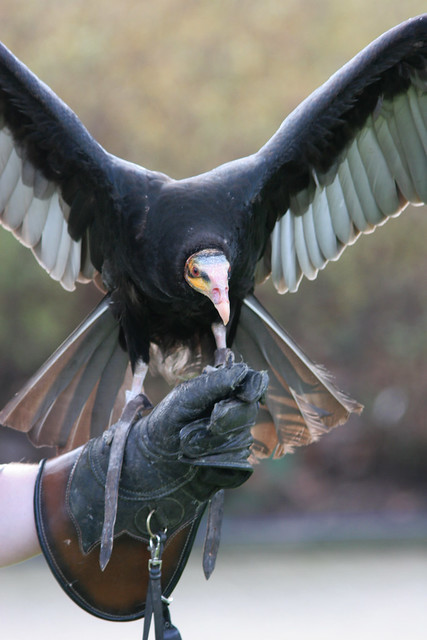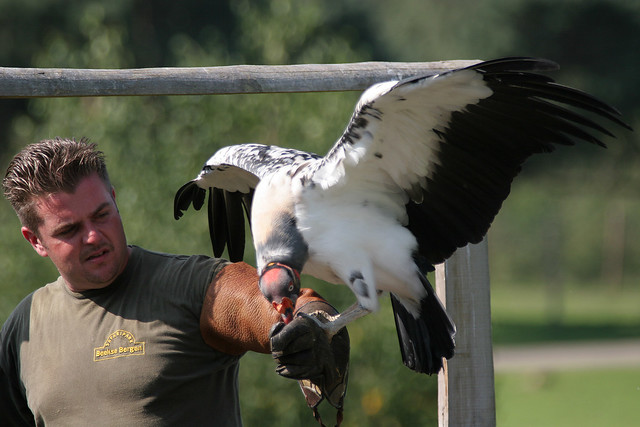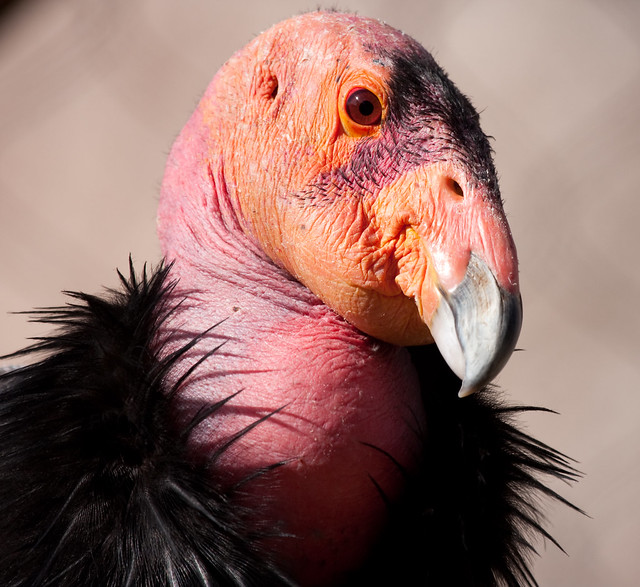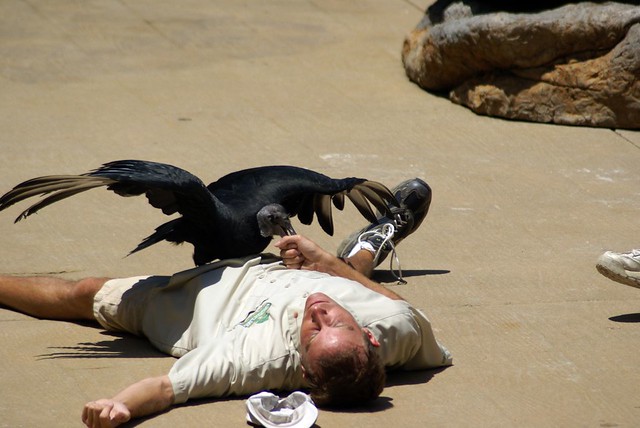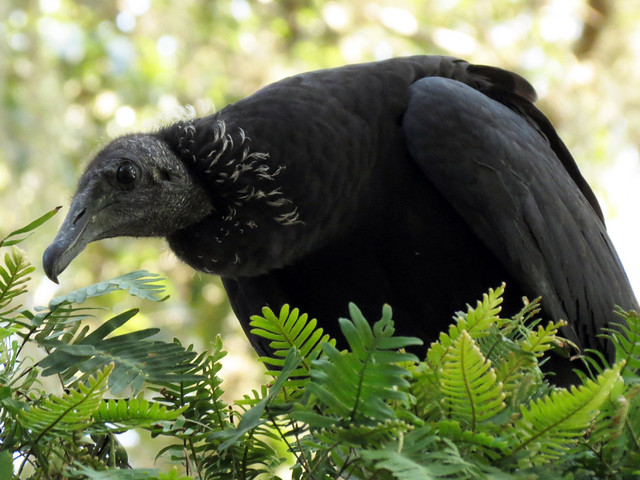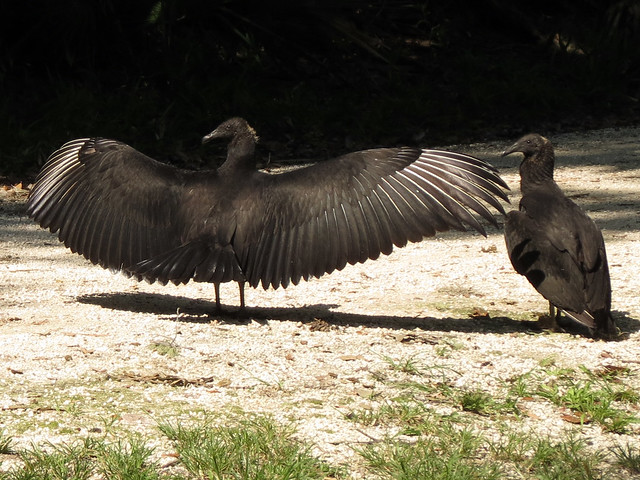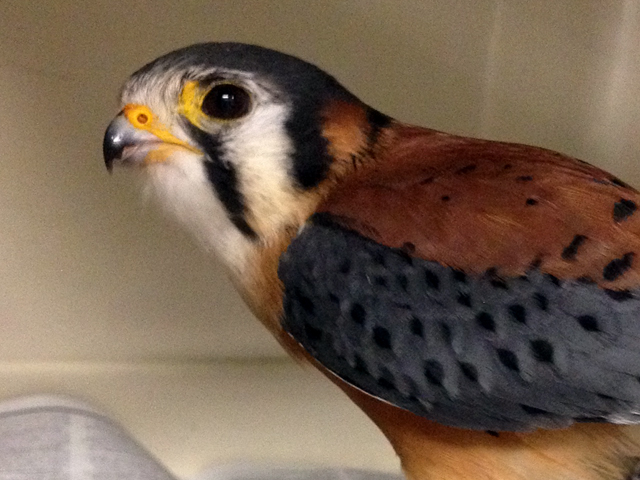After observing the Red-cockaded Woodpeckers during the early portion of last week’s field trip (see post Looking for Red-cockaded Woodpeckers in Ocala NF), we returned to an abandoned cluster of woodpecker cavities to learn more about how biologists study Red-cockaded Woodpeckers and how they establish new, active clusters.
Monica Folk, our field trip co-leader, is a biologist specializing in endangered species. She worked to reintroduce Red-cockaded Woodpeckers (RCWOs) in the Disney Wilderness Preserve, which now has a sustainable population.
The heart of establishing a new, successful cluster of RCWOs is the artificial nest cavities. Since it takes a male woodpecker up to 4 years to complete one cavity, biologists give the birds a head start by installing pre-made cavities into living pine trees. The cavities are made of solid cedar wood. A woodpecker-sized hole is drilled downward into the wood and then a panel is placed on top to close the box.
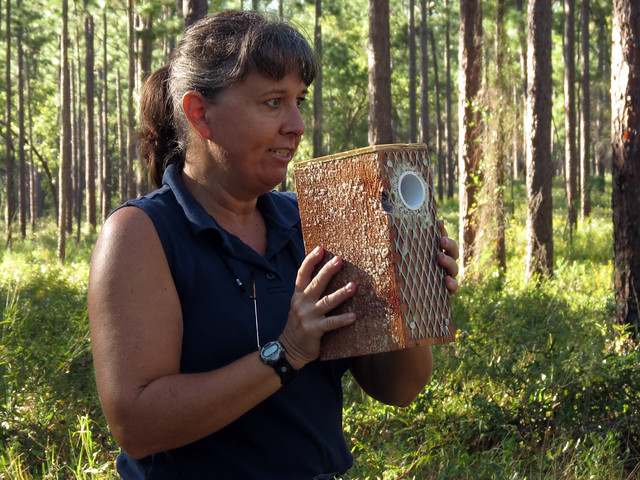
Cedar nest box with PVC around the opening and wire reinforcement on the front
The hole is cut out of the front and then fitted with a piece of PVC pipe to prevent other woodpeckers (Red-bellieds and Pileateds, primarily) from taking over the box. If this happens, the box is “blown out” and will no longer be used by the RCWOs. Wire mesh is also added to the front of the box to prevent predation and damage by other woodpeckers.
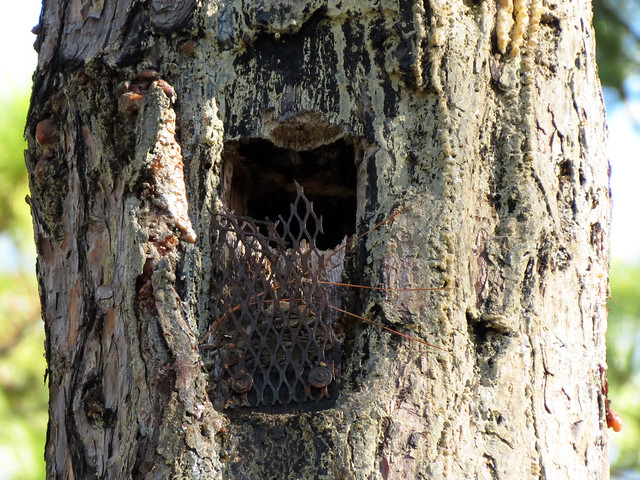
Old RCWO nest box damaged by other woodpeckers
Chainsaws and crowbars are used to carefully cut out the hole in the living tree. The outside of the box is covered with adhesive and then the box is pounded into the tree. To make the cavity more attractive, hammer holes are pounded around the cavity opening to release resin. Once a bit of sawdust is added to the box, it’s ready to house a RCWO.
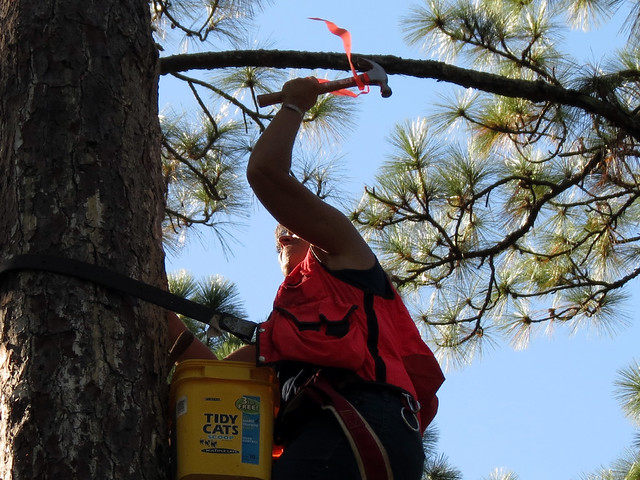
Using the back of a hammer to make holes around the artificial nest cavity
Damaged cavities can be replaced, and cavities used by other species (Eastern Bluebirds and Carolina Chickadees are two species that may use abandoned RCWO cavities) can be cleaned up to make them attractive to the woodpeckers once more. During the demonstration, Monica used a shop vac to clear out bluebird nesting material from an otherwise fine nest box.
Once the requisite number of cavities are set up within a cluster area (10 acres or so, depending on habitat), and the required and desired number of clusters are set up within a reintroduction area, site biologists may receive juvenile birds from established breeding sites. Retrieving birds is a very involved process which requires a lot of prior research and contingencies for a myriad of possible scenarios come “kidnapping” day.
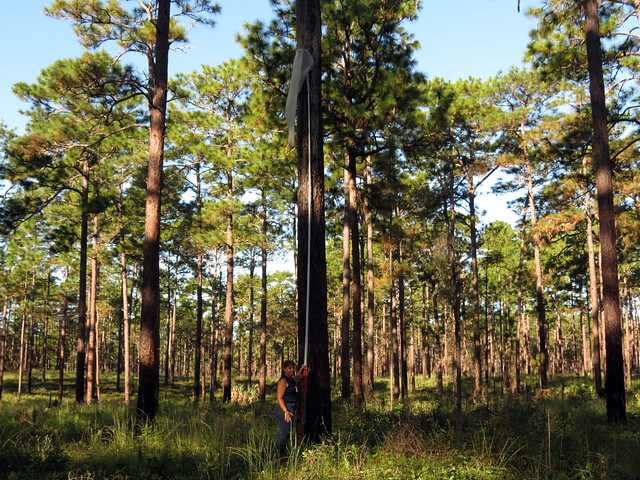
A long net is telescoped up to the opening of a RCWO cavity
Birds are captured using long, telescoping nets. The net is placed over an active roosting cavity once the bird is inside for the evening; the tree is disturbed (tapped or shaken) to get the bird to fly out again, this time into the net. The RCWO flies out and eventually lands at the end of the long net. It is then safely removed from the net and then placed into a special box.
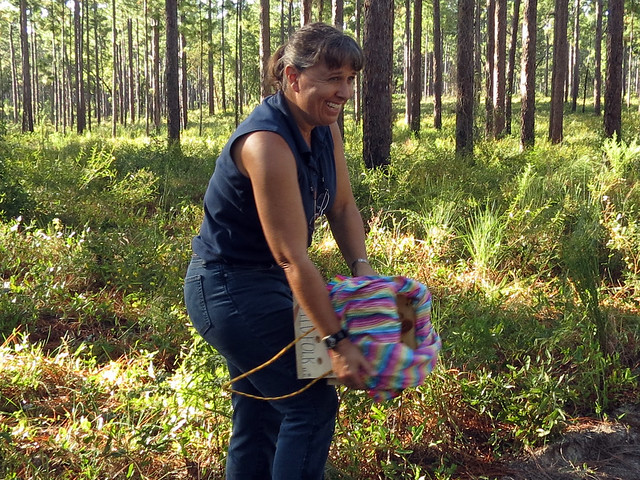
RCWO transport box. Notice rainbow-colored “sleeve” which helps prevent escape
The box has a cloth “sleeve” attached around the top. The sleeve allows biologists to open the wooden box and reach in to remove or replace the RCWO without the bird escaping. During the relocation process, the birds are captured at or after sundown, and sleep the night in the box. The next day, starting at sunrise, the birds are hand fed (!!) 3 prey items (ie crickets) every 45 minutes (!!), until sunset. It’s odd that these wild birds will readily accept food in the hand, but their natural biology has them eating nearly constantly every waking moment, so their hunger must override any fear they might have of humans.
Shortly after sunset, the birds are relocated to their new habitat. One young female and one young male are placed into a new cluster. Each bird is put into a cavity, where it sleeps for the night. A screen cover is placed in front of the opening to ensure the RCWO remains inside its cavity until the next morning. The cover is removed remotely from below with a string attached to the screen. RCWOs typically vocalize at waking, and keep in contact with their cluster-mates throughout the day. With this habit, the new birds are able to find each other at first light and hopefully begin foraging and/or exploring the new territory together.
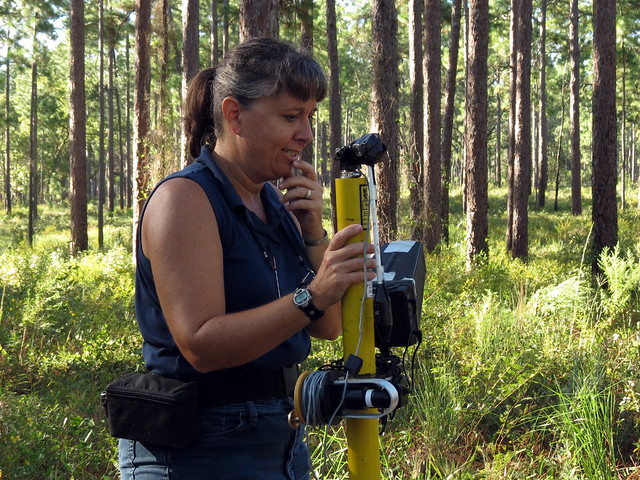
Monica holds a “peeper scope” in retracted position
The woodpeckers are monitored during the breeding season. In the past, biologists had to climb ladders as tall as 40 feet in order to look inside nest cavities. Nest monitoring takes place every 7 days and a biologist may have several clusters to check – that’s a lot of climbing! Today biologists may utilize a “peeper scope” — a camera set up on a long telescoping pole with a monitor or viewfinder at the bottom. The scope is raised up to the level of the nest and gently poked inside.
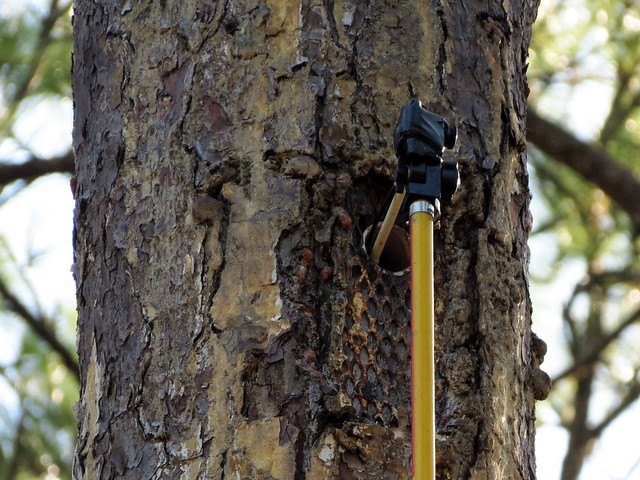
Peeper scope peeping inside a nest cavity
RCWOs may lay up to four eggs. Incubation begins after the second egg is laid; the eggs hatch after just 11 days of incubation. The nest is usually in the male’s cavity. The female will incubate during daylight, where she is fed by the male throughout the day. The male incubates at night (which makes sense — the eggs are in his cavity, after all!).
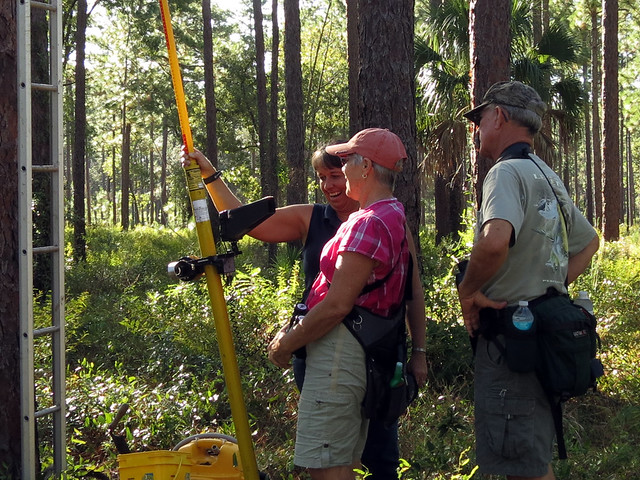
No eggs, just nesting material from an old bluebird nest
Biologists check the nest cavities for eggs. Depending on the number of eggs found, they can calculate when hatching may occur. This is important to know, since the chicks develop quickly. Eleven days after hatching, the chicks are still featherless, but their legs have already grown to their full size. This is when the chicks are banded.
The procedure for retrieving the chicks for banding seems a bit tricky. The nest cavities are permanently installed in the tree; there is no hand-sized opening. Biologists climb up on a ladder and use a small, delicate plastic “noose” to gently pull the chicks, unseen, out of the nest. A simple mirror on a stick is used to check that all hatchlings have been removed from the nest. The chicks are carried down to the ground, banded and measured, and then gently returned back to the nest.
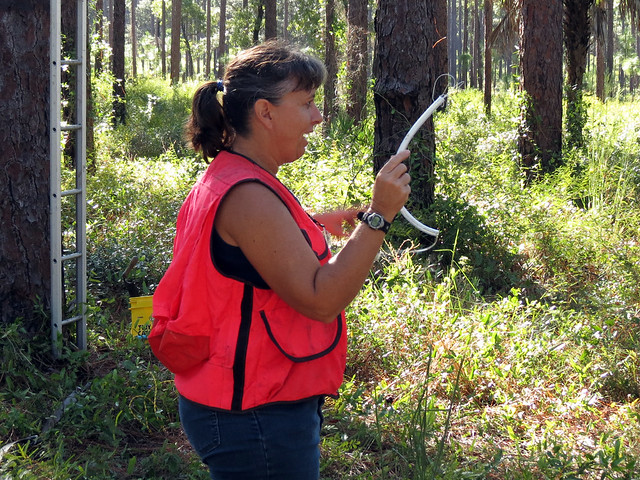
Monica shows the small plastic noose used to extract the chicks
RCWOs at the Ocala NF sites we visited are fitted with five bands each. Three color bands are on one leg, while the other holds the metal federal band and one color band. This means the birds can be monitored without further capture and RCWOs that branch out to new territories can be identified and followed.
It was fascinating to learn about Red-cockaded Woodpecker biology and monitoring. Life bird + learning cool biologist stuff = big win!
NOTE: I’ve composed this post from information that Monica shared with us during the field trip; hopefully I’ve gotten the facts straight but obviously any factual errors here are strictly my own.
Share the birds, share the love!
